Which is the only thing I consumed that Sean and Seth had not, but they were not up all night puking their guts out every few minutes (which sucks all the more when the bathroom in your hostel is downstairs).
I waited about two hours to make sure that I was puking because of some kind of food poisoning rather than some other stomach problem, but when that two hours was up and I was still vomiting, in went the ciprofloxacin. Cipro is a serious antibiotic that the U.S. stockpiles in case of anthrax attack. It's also good to take if you consume any bad water or food, which is why it's in our Peace Corp medical kits and why it was in my backpack. A few hours later I settled out and managed to get a couple hours of sleep.
***
RANT: Feel free to skip
This is why I think antibiotics should not require a perscription. It's not like you can abuse them like painkillers and it's nice to have a supply when you really need them. I remember a roadtrip to Vegas getting completely sidetracked because I developed an ear infection that was painfully draining into my throat, preventing me from eating anything but soup. I knew exactly what I needed: amoxocillin. We finally found a walk-in clinic in Arizona. The doctor saw me for about ten seconds, then prescribed me: amoxocillin. Besides the $20 copay and the cost of the antibiotics, I later got a bill for $110 in the mail because I had not out-of-state medical coverage. It would have been nice for the FDA to let me make the informed call myself and save me the money. And while I realize antibiotics could be abused, taken for every sniffle, at least let there be some sort of certification program like CPR so that afterwards I got get them on my own. A doctor in the states may give you cipro a head of time if you tell him or her you're going to a non-first world country, but you'd still have to pay just to get the prescription.
***
Needless to say, I was pretty weakened in the morning, which is not a good state when the plan for the day is to take a bike tour of Krakow. I soldiered through because I knew that if I stayed at the hostel, I'd be perkier in a couple hours and annoyed that I had missed it.
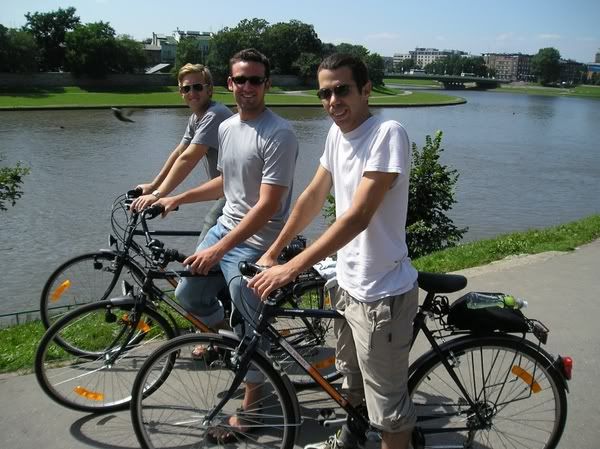
Seth, Sean and I on the bike tour. If I look a little worse for wear, it's because I was just getting over food poisoning
As is, it was a fantastic tour. I've learned that one of the first things to do in any major city where they are available is to take the bike tour. They tend to help you get your bearings, show you a lot of sites and tend to be hipper than any walking tour.
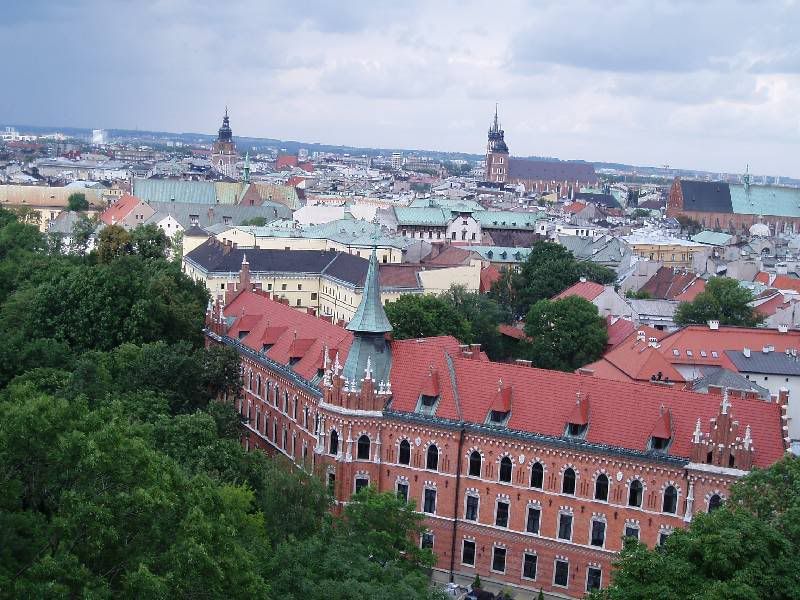
Krakow, seen from Wawel Castle
Our guide, Dave, was an American who had been living in Krakow for seven years. He was knowledgeably, funny and just really good at his job. For instance, according to Dave (but confirmed by a guide book), Krakow is named after a knight called Krak. Yes, Krak. According to legend he cleverly slew a dragon, took the offered prize of the town leader's daughter and thusly became it's leader. Out of humilty, he decided to name the town after himself.
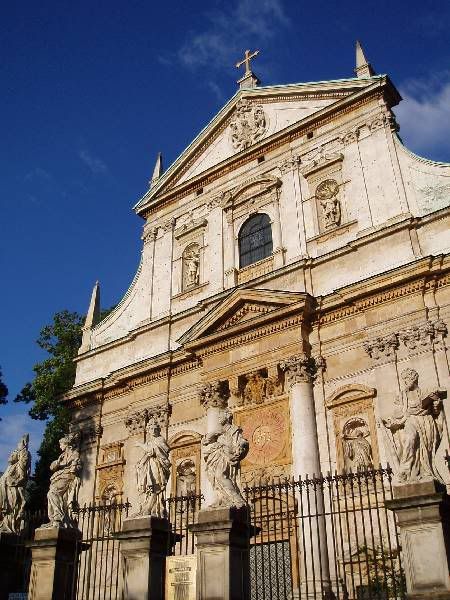
A bit of Krakow archetecture
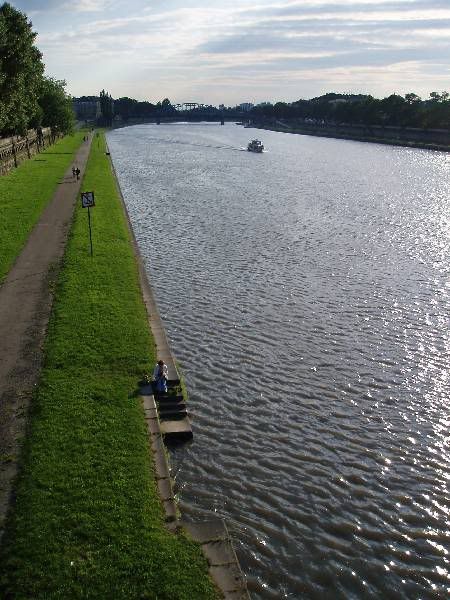
Krakow's river
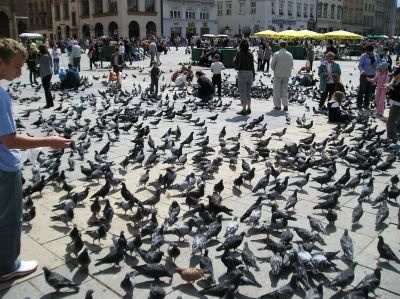
Pigeons in Main Market Square
Krakow's Old Town is one of the most beautiful that I've seen. Ringed by a park, it's a huge collection of buildings from different periods in history. Most of it, unlike a lot of Eastern Europe, unscathed by World War II. In the center of Old Town is the Main Market Square, a huge expanse of cobblestones surrounded by cathedrals and buildings, carpeted by pigeons, tourists, performers, and vendors.
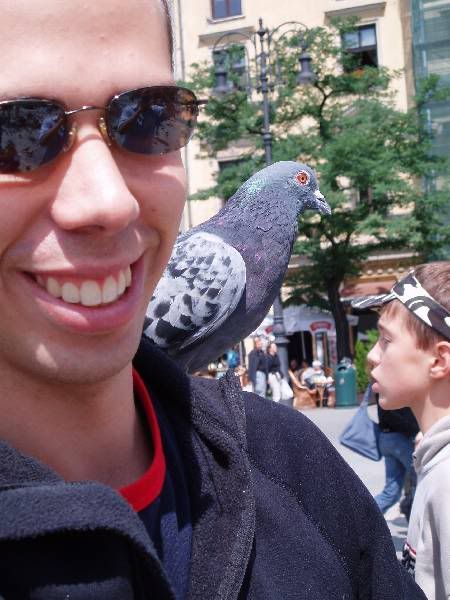
Pigeon on my shoulder. I thought Seth had tapped my shoulder, but when I looked back, I saw this guy sitting there.

I like the clash between contemporary and traditional with two women cooking up food in Main Market Square.
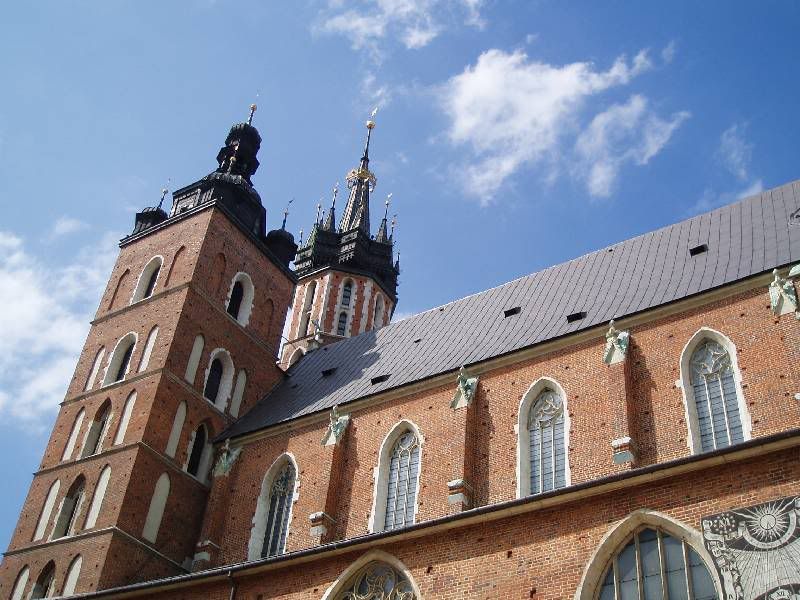
A church in Main Market Square
As beautiful as Krakow's is, though, the city has a much darker side. When the Nazis left in retreat near the end of World War II, they would leave behind a decimated Jewish population and two of the largest concentration camps: Auchwitz and Auchwitz-Birkanau, where 1.5 million people died. The surviving Jews fled. There are so few Jews in Krakow today that Krakow's rabbi actually lives in New York.
When the Nazi's arrived, one of the first things they did was isolate the Jews in a walled ghetto. This is where they crossed into the ghetto:
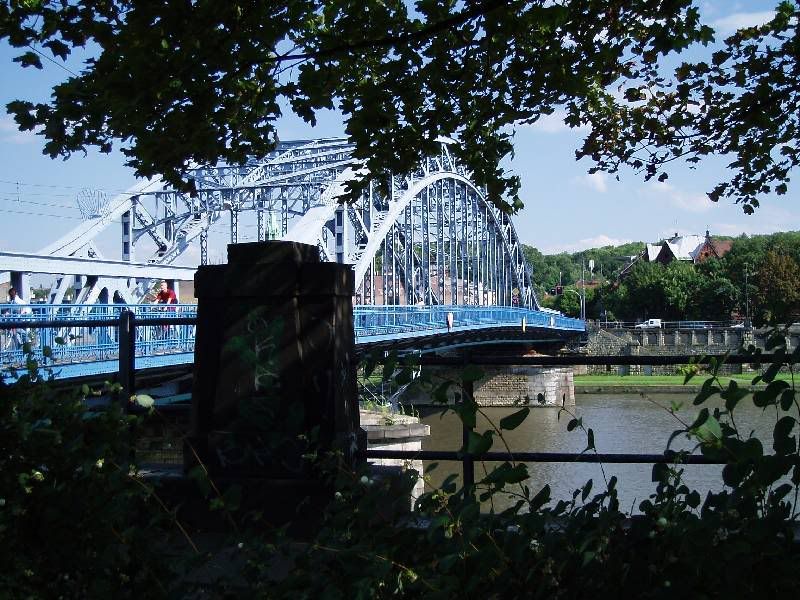
The bridge leading into the Jewish ghetto. The original was blown up by Nazis to slow the invading Soviets. This is one is modeled on the first.

The only part of the ghetto wall still standing
In the ghetto the Jews lived and worked, traffic in and out being controlled by guards, food ration tossed over walls to whomever was lucky enough to be there. Non-Jewish people having to move through the ghetto to reach factories on the outskirts of town did so in guarded trolley-cars with shaded windows. This was to both prevent them from seeing the deterioration in the ghetto and/or to prevent them from providing the Jews with news or supplies. When the concentration camps were completed, the ghettos were emptied out.
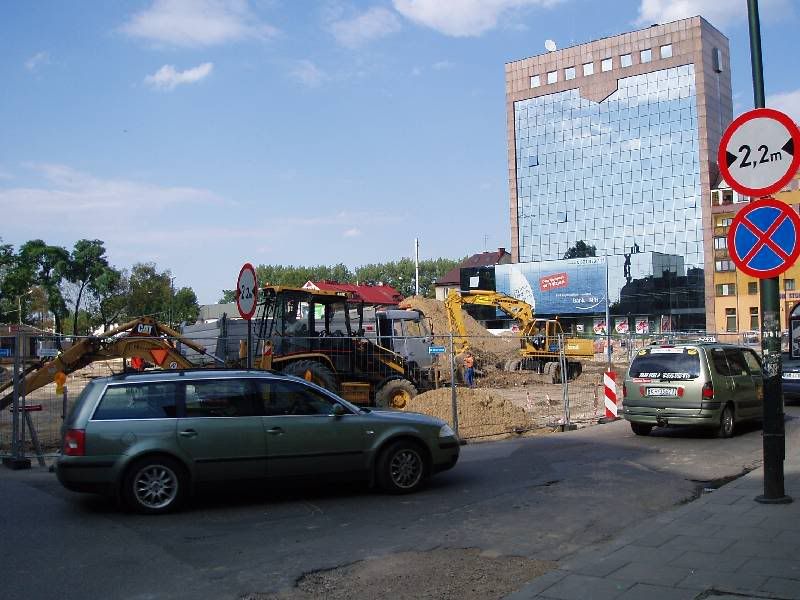
Where the Jews were rounded up to send to concentration camps
If you'll notice in the above photograph, people still live and work where the ghetto once was. In fact, people are living in the same buildings, the same rooms that once had an average of 9 Jews per apartment compressed into them. According to that stigma, said Dave, property values were extremely low and the ghetto is now what we would think of as a ghetto: an extremely economically depressed area. Few tourists ever made it out there, and it was dangerous to do so. The only marks of the history of the ghetto is the section of wall in the picture above and a single small plaque on the pharmacy next to this square. The plaque was to commemorate a Catholic pharmacist who did his best to help the Jews.
There are some stories of hope to come out of this, and one of the more famous was the story of Oskar Shindler, the protaganist in Steven Spielberg's Shindler's List. I never saw the movie, but would like to now. On the bike tour we went to the actual factory, which now houses commercial offices. One of them was for a snowboarding magazine company.

Outside Shindler's factory
Shindler's story, in brief: Shindler was a buisnessman who came to Krakow during the war to make money. Buying a seized Jewish factory, he began making mess kits for the Nazis using Jewish slave labor. In an effort to keep up efficiency, he bought his workers extra rations and bribed Nazis to let them off of work details like street cleaning so that they could get to work on time. According to Dave, most of his early helping was entirely self-serving, and that the movie portrays him with too much empathy.
Still, Shindler became attached to his workers and began helping them more and more. When the Nazis began loosing, stopped buying mess kits and decided to move his factory equipment west in order to begin using it to make ammunition, Shindler paid a bribe to have his work force move with him and the equipment, sparing the lives of the workers, who would have gone to the concentration camps instead. He was given one night to draw up the names of all the workers and their family members who would be saved by the move. Hence, Shindler's List.

More of the factory
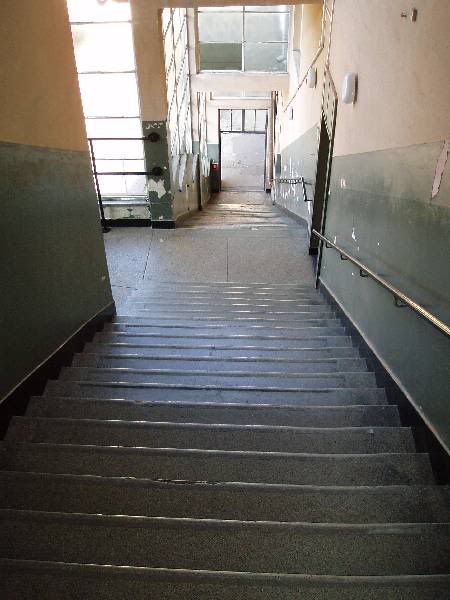
In the movie and in real life, one woman, who knew Shindler was a ladies man, dolled up to get his attention before begging him to save her family. These are the actual stairs where he appraised her before telling his secretary to let her come up to his office. He did save her family.
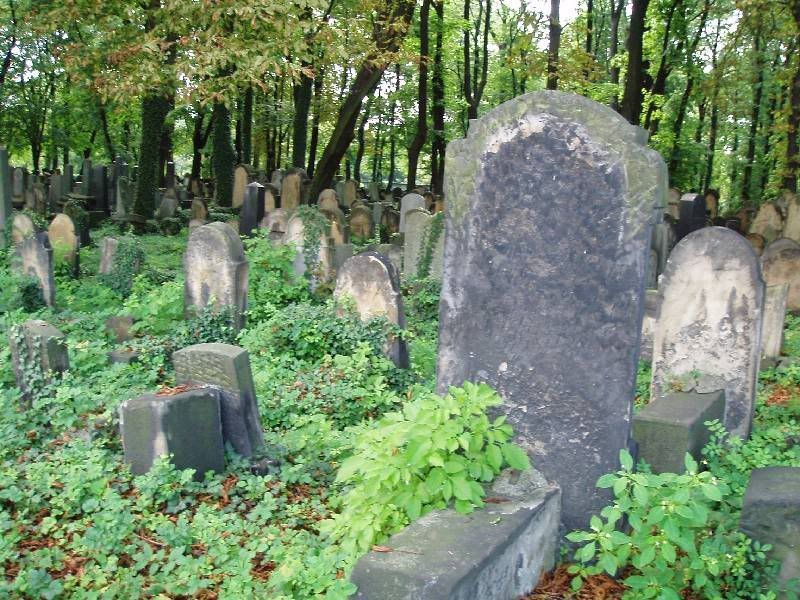
The old Jewish cemetary. Because there is no Jewish community in Krakow to take care of it, it is overgrown. According to Dave, the similarity between the way these Jewish Orthodox headstones are carved and the top of the ghetto wall was done on purpose by the Nazis to demoralize the Jews
Luckily, not all the tour was that emotionally heavy. On to some other sites.
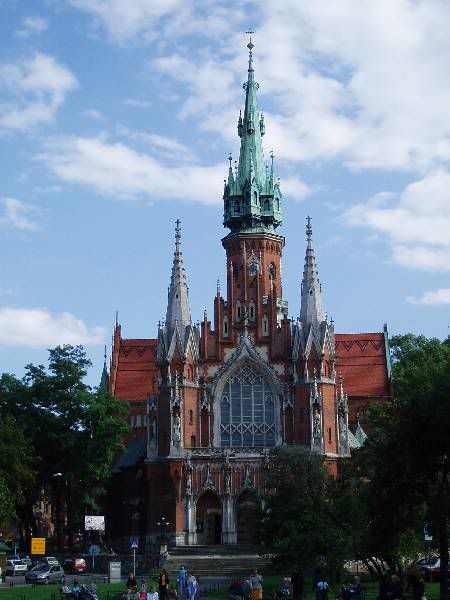
Catholic church in Krakow
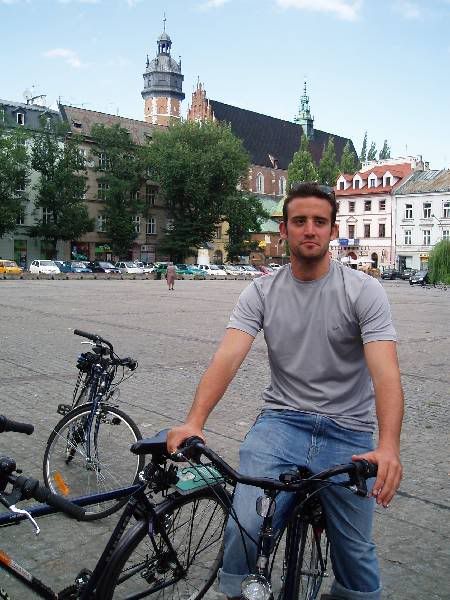
Sean on the bike tour
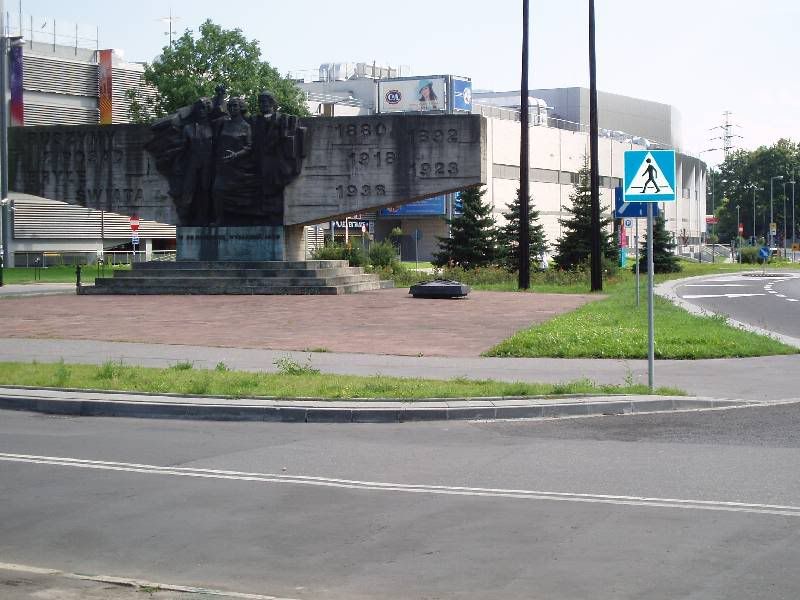
A monument to communism in front of a modern monument to capitalism: a mall
The bike tour got us way outside the historical center, where you knew few, if any tourists went, including past the above mall. We stopped at a gas station for snacks. After unsuccessfully experimenting with different--mostly healthy--things to see if they would stay in my stomach, it was only after puking up a lot more in the gas station bathroom and then munching, ironically, a bag of chips and drinking a gatorade that I felt better. The water, the salt and the carbs are what did it, and the chips actually absorbed a lot of whatever acids were raging. I finished out the bike tour in a much better mood.
The rest of the photos are from around Krakow. Enjoy.
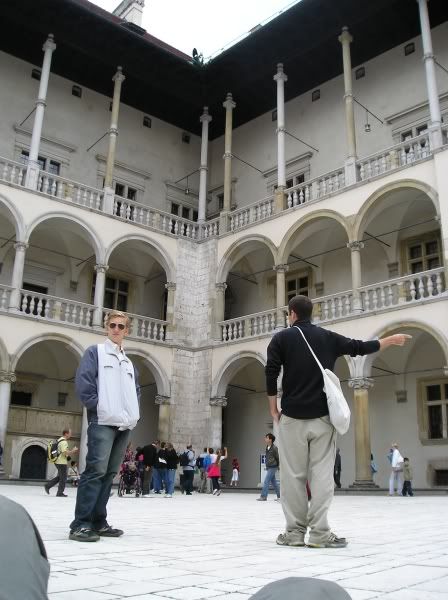
Seth and I inside Wawel castle
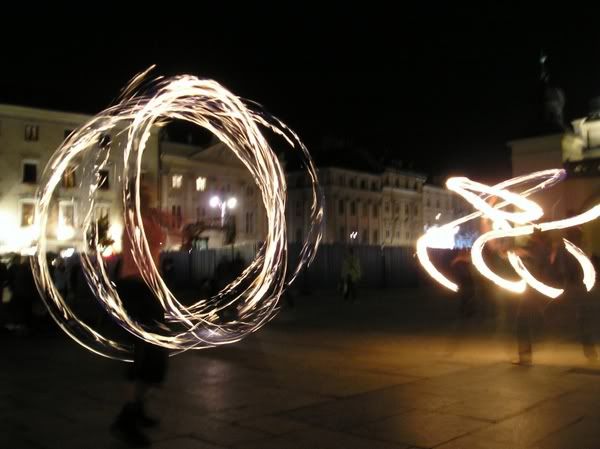
Fire twirlers in Main Market Square

Seth and I in people-packed Old Town. I'm still under the weather in this pic.
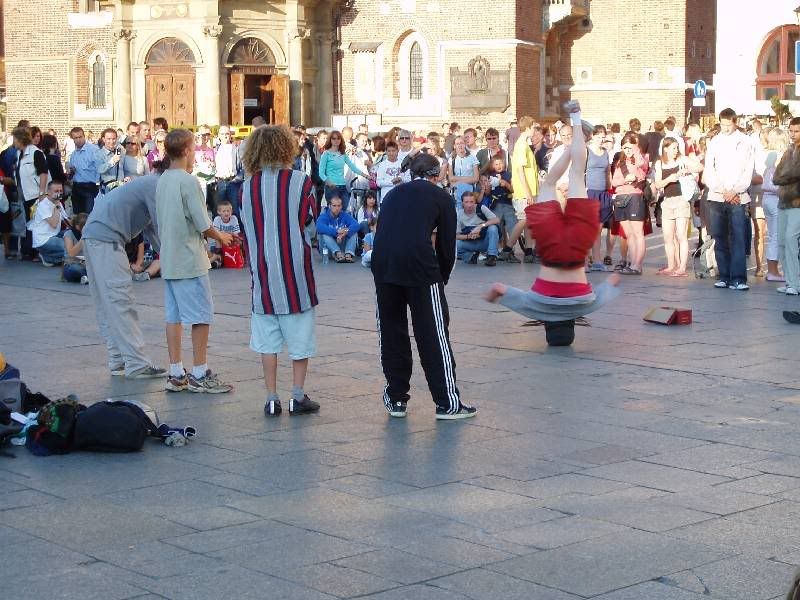
Break dancers in Main Market Square